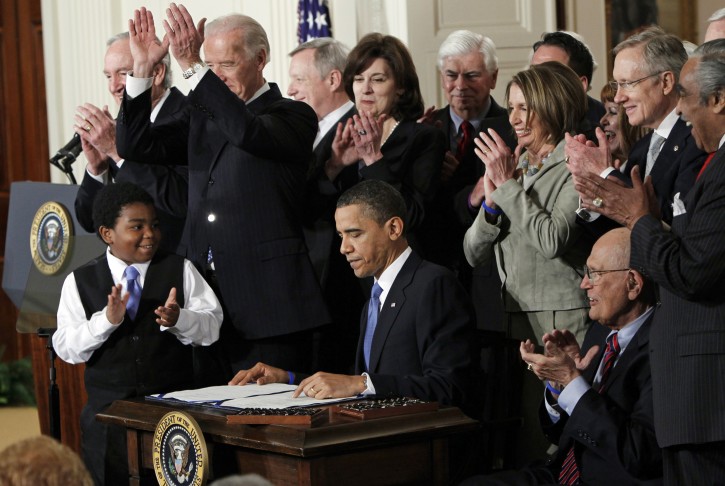
Washington – A government report finds that the cost of expanding Medicaid to millions more low-income people is increasing faster than expected, raising questions about a vital part of President Barack Obama’s health care law.
The law provided for the federal government to pay the entire cost of the Medicaid expansion from 2014 through the end of this year.
Obama has proposed an extra incentive for states that have not yet expanded Medicaid: three years of full federal financing no matter when they start. But the new cost estimates could complicate things.
In a recent report to Congress, the Centers for Medicare and Medicaid Services said the cost of expansion was $6,366 per person for 2015, about 49 percent higher than previously estimated.
“We were told all along that the expansion population would be less costly,” said health economist Brian Blase with the Mercatus Center at George Mason University in Virginia. “They are turning out to be far more expensive.” Blase previously served as a GOP congressional aide.
The new estimates could be a warning light for Democrat Hillary Clinton, who has promised that if elected president she would work to expand Medicaid in the remaining 19 states that have not done so. Higher costs would make it harder for a President Clinton to sell Obama’s full-financing plan to Congress.
Under the law, people making up to 138 percent of the federal poverty line — roughly $16,390 for an individual and $33,530 for a family of four — are eligible for Medicaid at little or no cost to them.
An estimated 9 million to 10 million people are covered by the Medicaid expansion, and many of the remaining uninsured are likely to be eligible if their states accept. Most of the new Medicaid recipients are low-income adults.
Medicaid has traditionally carried a social stigma, and conservative critics say it’s no better than being uninsured. But studies have debunked that perception, showing that Medicaid eases financial burdens and provides access to needed medical attention. It can be less complicated for consumers than the subsidized private insurance that’s also offered by the health care law, which requires people to account to the IRS for their financial subsidies.
The nonpartisan experts at the CMS Office of the Actuary wrote in their report that they were expecting costs to decrease in 2015. They had reasoned that uninsured people who were putting off care would sign up for Medicaid in 2014, the first year of expansion. The experts expected that pent-up demand would ease in 2015, and per-person costs would drop. But the opposite happened: Costs went up.
An Obama administration spokesman says estimating the cost of a new health program is not an exact science.
“It is natural for estimates to change as new data become available, but the bottom line is that a growing body of evidence shows that Medicaid expansion improves the health of states’ citizens, while reducing the burden of uncompensated care,” CMS spokesman Aaron Albright said in a statement.
Albright said that the overall cost of the Affordable Care Act’s coverage expansion is still lower than estimated when the law passed in 2010. However, other variables besides per-person costs enter into that overall figure. They include the total number of people enrolled, which has been lower because many states have not expanded Medicaid.
The report said the higher cost trend could be the result of different factors, from sicker-than-expected enrollees, to possible problems with the preliminary data that states are reporting.
Another significant driver is that upfront, per-person payments states make to the private insurers who manage their Medicaid programs have been considerably higher than expected.
Blase sees potential for waste because Washington is still picking up the full cost of the Medicaid expansion.
States “have virtually no incentive to be cost-conscious,” he said, and they are paying very high rates to benefit insurers and hospitals, major local businesses.
The government says state contracts with insurance companies usually include a mechanism for recovering overpayments. Still, it may take time to get back money that’s gone into an insurer’s bank account.
As reported by Vos Iz Neias
